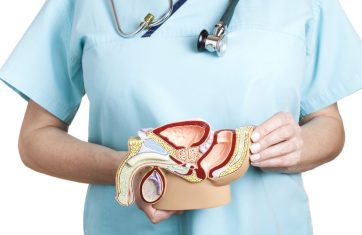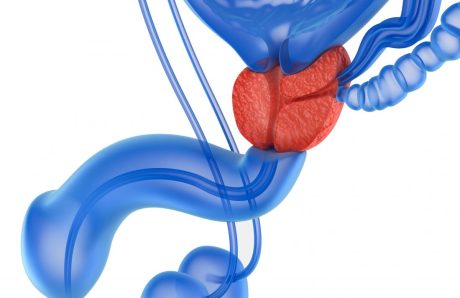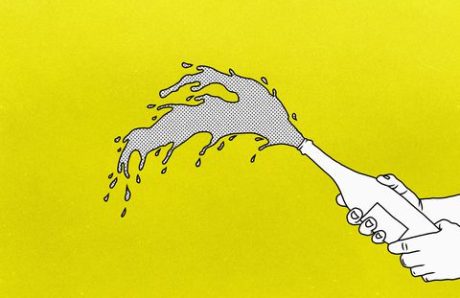
It’s one of those strange anatomical-arboreal coincidences: the human prostate is roughly the size and shape of a walnut. But what if it really was a walnut?
Last year, 221,000 men were diagnosed with prostate cancer; that’s more than lung, colon and brain cancers combined. And nearly 29,000 men died from it last year.
These are grim statistics, but there’s plenty to be optimistic about. What follows is the latest live research on how to prevent, detect and treat the disease.
PREVENTION
Love yourself
As if masturbation didn’t already yield enough benefits, a recent Australian study has revealed that impromptu sex may also help prevent prostate cancer. The study of 2,338 men found that men who masturbated five or more times a week were 34% less likely to develop prostate cancer by the age of 70. “Seminal fluid contains carcinogenic substances,” says Graham Giles, Ph.D., lead author of the study. “Regular ejaculation can help flush them out.”

And in case you were wondering, no, masturbating more than once a day won’t offer more protection, and yes, sex with your partner is fine too. But before you have unprotected sex with your partner, make sure she’s been tested for cytomegalovirus, a type of herpes recently detected in cancerous prostate tissue.
Be happy… and bald
The hair loss drug Propecia has an impressive side effect. In a study of 18,882 men conducted by the National Cancer Institute (NCl), researchers found that men taking 5 milligrams (mg) of Propecia, aka finasteride daily for 7 years, had a 25% lower risk of prostate cancer than those on placebo. Finasteride blocks the production of dihydrotestosterone. This hormone triggers hair loss and prostate growth.
“This is the first study to prove that prostate cancer is preventable,” says Peter Greenwald, MD, Director of Cancer Prevention at NCI. And one of those 18,882 men. “My prostate is normal,” he adds.
One caveat, however. Men treated with finasteride had a slightly higher risk of being diagnosed with a more aggressive form of the disease than placebo takers. Further research on the drug is needed. But if you’re concerned about prostate cancer, discuss these results with your doctor.
Celebrate
There’s a good reason why Western European men have lower rates of prostate cancer than our own. New research suggests that certain staples of the Mediterranean diet have prostate cancer-fighting properties. For starters, men who eat more than 10 grams (g) of garlic or green onions (about three garlic cloves or 2 tablespoons of onions) have a 50% lower risk of prostate cancer than those who eat less than 2 g. Give credit to organosulfur compounds, which are common to both vegetables.
Then there’s red wine. Red grapes are bursting with resveratrol. It’s an antioxidant found in certain plants that may help slow the growth of prostate cancer. A glass or two of red wine a day should be enough. If you drink too much, you may neutralize the beneficial effects.
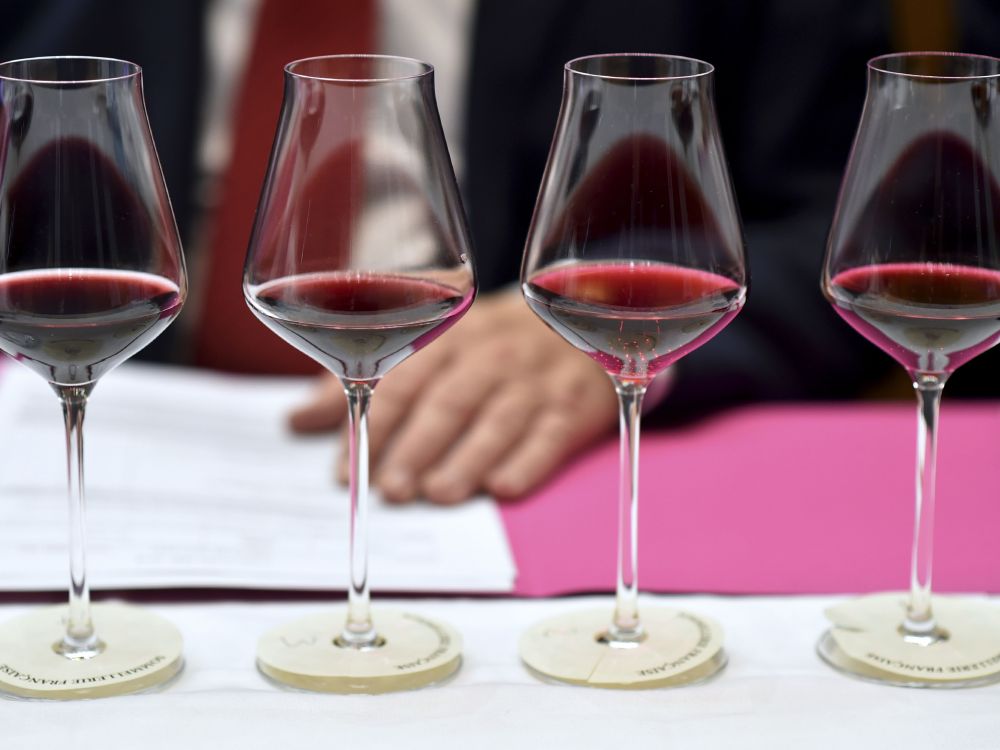
DETECTION
Lower the bar
A recent study of 6,691 men, published in the New England Journal of Medicine(NEJM), showed that 82% of prostate cancer diagnoses in men under the age of 60 were probably missed by the traditional threshold for ordering a follow-up biopsy. The 4.1 threshold used has never been rigorously studied. And while critics say a lower threshold will lead to unnecessary biopsies, Rinaa Punglia, MD, another of the study’s authors, believes the broader standard may be worthwhile. “It’s a compromise,” she admits. But it could save lives.
So how low should you go? A threshold of 2.6 is recommended. Especially if you’re under 60, when your PSA level is checked every year. From age 50 or 45, if you have a family history.
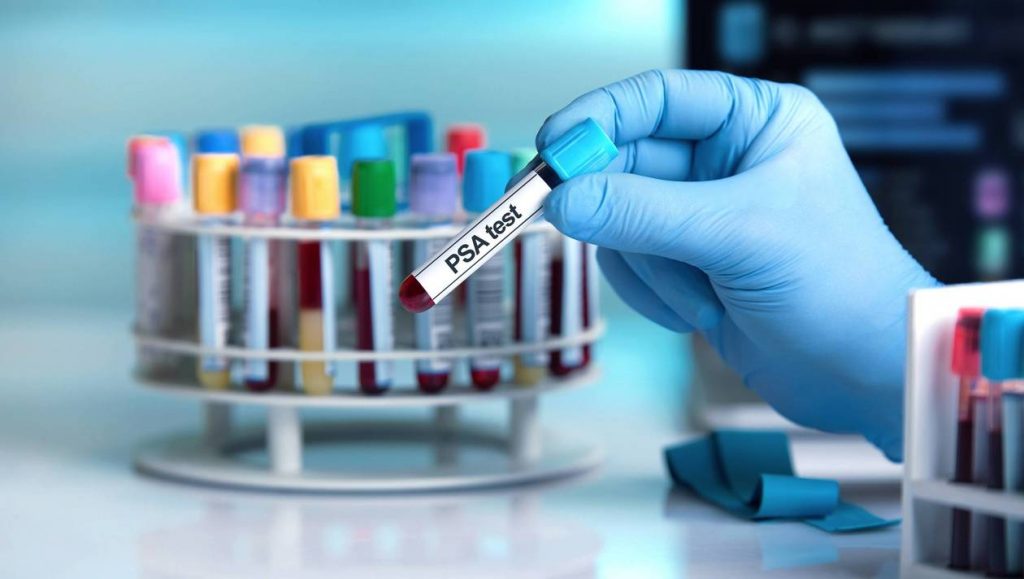
Calculate your risk
Let’s say your PSA is 2.6. You still don’t need a biopsy. Instead, ask your doctor about using a nomogram. This needle-free analysis transforms :
- the patient’s age,
- PSA density (PSA divided by prostate volume),
- digital-rectal examination result,
- transrectal ultrasound result,
into a score for determining whether a biopsy is really warranted. In a study of 1,200 men, Dr. Garzotto revealed that if a nomogram had been used in all cases, it would have spared 24% of men unnecessary biopsies.
TREATEMENT
Opt for the spice blend
Researchers at the Center for Holistic Urology at Columbia-Presbyterian Medical Center in New York recently made a laboratory discovery. A blend of herbs including ginger, oregano, rosemary and green tea reduces the growth of prostate cancer cells by 78%. Sold under the name Zyflamend, it inhibits the activity of COX-2, a protein linked to disease progression.
Use CAD (Computer-Aided Doctoring)
Radical prostatectomy has recently become much less radical, thanks to a new robotic version of the procedure. With the Da Vinci system, doctors use three-dimensional imaging. They direct two nimble robotic hands through a few small slits in the patient’s abdomen to remove the cancerous prostate. According to data from the Vattikuti Urology Institute of Detroit’s Henry Ford Health System, 90% fewer men became incontinent and 50% less impotent with the Da Vinci system than with manual gland extraction. Another advantage: patients spent an average of 1.5 days in hospital, compared with 2.3 days for open surgery.
Save your erections
This is a no-brainer: save your sex life, and your erections. The cavernous nerves, aka the boner bugle body, are often the victims of prostate removal. Especially if the cancer has spread (or may have spread) outside the gland. But by replacing the cavernous nerves with the sural nerve that runs along the ankle, as many as 9,000 men a year could regain erectile function. If you only have one [cavernous] nerve left, you’re firing on four cylinders. But if there’s a graft, it’s like firing on seven out of eight. And don’t worry, mild numbness in the foot is the known side effect. Ask your urologist where to find an expert surgeon in sural nerve grafting.


